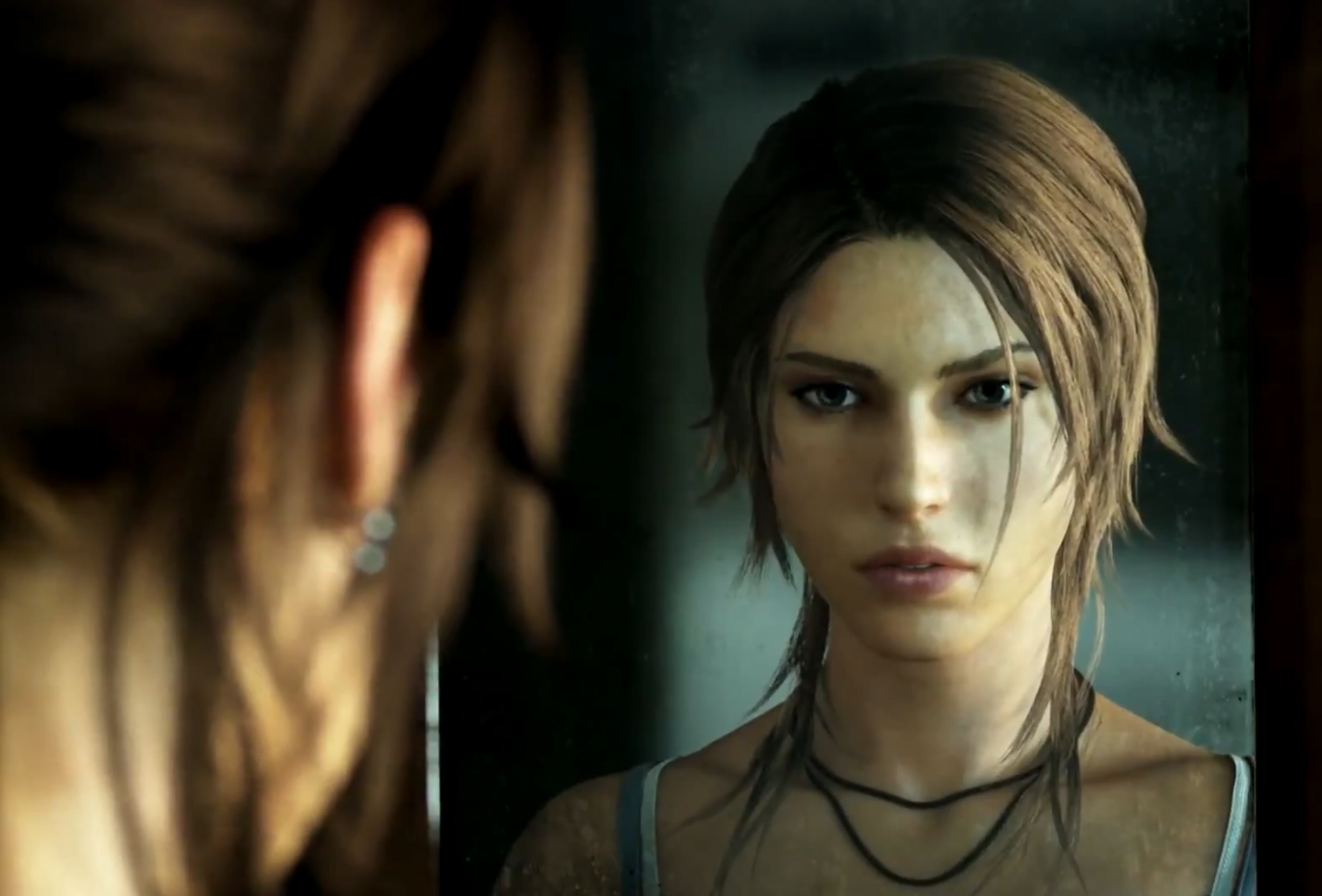Square Enix need Tomb Raider, the latest in a line of re-imaginings by veteran developer Crystal Dynamics, to be a success. Profits have plummeted, and their last major release – Hitman: Absolution – was dogged by PR problems and some disappointing reviews.
A no-holds-barred, open environment ‘survival action’ game, as they have termed it, has the challenge of bringing back fans of the old game while expanding an already enormous audience.
I have none of the same problems. I played two Tomb Raider games on the PS1, and found them relatively enjoyable. I’m not a Square employee or a paid and pressured hack. I also haven’t played enough of the game to make a definitive judgement. But I have seen enough to worry.
Attending a presentation and Q&A at Bafta’s swanky Picadilly theatre, there was a lot to love. Studio and creative directors Darrell Gallagher and Noel Hughes spun an enthralling story of the development process across the last six years. This was a game that didn’t start out as a reboot at all, but a direct sequel to their previous effort, Tomb Raider: Underworld. Codename ‘Ascension’ lingered in early pre-production footage, with various monsters having their limbs pinned by arrows or blown off, acrobatic combat and climbing mechanics, and a tantalising horse-riding animation. At one point, Lara escorts a child across canyons, vaulting, sliding and grappling with ease. Battles were strafing, target-locked affairs with the zip of a Devil May Cry.
This was a game that didn’t start out as a reboot at all, but a direct sequel to their previous effort, Tomb Raider: Underworld – codename ‘Ascension’.
The epiphany which saw that project scrapped was not within games, but from movies. The idea of a reboot had drifted around, but as Tomb Raider was being conceptualised, films like The Dark Knight and Casino Royale were showing what you could achieve with a classic IP. Reboots were the flavour of the year, and Crystal saw an opportunity. Concept artists in tow, they set about crafting a different vision entirely.
A video of Aron Ralston, the canyoneer immortalised in Danny Boyle’s 127 Hours, was circulated internally, and the story of the Andes flight disaster, where a group of rugby players turned to cannibalism to survive, was discussed at length. Previous games “hadn’t delivered on the sense of journey,” said Hughes. “We wanted a more human version of a hero, rather than a superhero.”
With the motto and tagline “A survivor is born” came the central axis for the entire development process. This culminated in three central pillars of gameplay – ‘dynamic traversal, desperate combat, and smart Lara’. They aimed to dedicate a third of the game to each, but have them blending constantly. The environment would be treacherous and hostile, an “active ecosystem.” Combat would be tactical, “back against the wall” stuff. Physics puzzles would take advantage of current hardware and the scale of the game to provide a unique and roundly challenging experience.
It’s certainly a pretty game, even on Xbox. Set in the real-life Dragon’s Triangle, off the coast of Japan, it is both opulent and ravenous. Levels are fairly linear, but the terrain is such that without the controversial map, you can lose your way. It is “Lara vs the ecosystem” as much as vs the enemies that prowl the island. Where it might have lacked character, the location provides some unique thrills. Ancient Japanese ruins and some more modern architecture mark it out from the more pedestrian ‘Indy’-fare of Uncharted. Weather and wildlife culminate with the biggest ever Tomb Raider landscapes to “retain the sense of vast beauty and history” for which it is so well known.
To drive home how much they have altered the traditional formula, we saw a trailer made for Square Enix, to mark the end of pre-production – the only people outside the company who will ever see it, so they hope. Lara’s appearance was not finalised, monsters were prominent, movement was not as smooth, all expected. But the voice over provided the central motif. “Pretty little rich girl with the big guns. I bleed. I suffer. I make mistakes.”
“You think you know me?” I thought I did.
For all they said about it not being a game of action-packed corridors to cutscenes, for all the reassurance about the open-world nature and opt-in overlays simply opening the game up to new players, playing the demo gave me a different impression. I played an earlier version to completion at last year’s London MCM and had the same qualms. This one, moving from the exploration of a sun priestesses’ tomb (a ripple of recognition surfed the room with ‘Amaterasu’) and through the familiar hunting scene, culminated in Lara’s capture, and first ever human kill. These were intended as some of the most emotionally arresting scenes in the game, taking Lara from mythological wonders to scenes of peril. Events, said Hughes and lead writer Rhianna Pratchett, which “challenge Lara’s understanding of pure science. There are things in this universe which cannot be explained.”
All of which would be very interesting if I’d seen it. What I actually played was a series of quicktime events and camera pans through linear cave paths and along woodland tracks, quicktime events which sometimes trained you for more quicktime events, like a learning curve for button mashing. And cutscenes, incredibly long and frequent cutscenes, to the point where it became a guessing game as to when I’d get to play next. It played like Lost, a plodding series of staggered discoveries, fight scenes and rendezvous’ with ship survivors. It looks beautiful, and the story seems tremendously interesting, but it barely felt like a game at all.
A lot of what the guys from Crystal said was promising, and I won’t write it off yet. There are things in the game, places to explore, which it won’t tell you exist. Story and game progression and often mirrored, so that an injury changes your approach to navigation or combat. The story rings more of Far Cry than traditional Croft, with internal conflict and dark, knife-edge run-ins with the Russian occupants. Combat is solid, tense without being challenging, and fleshed out in upgrades and gradual weapon discovery. Good enough perhaps to emulate Mass Effect 3’s surprise success, especially looking at what Guardian of Light managed.
Tomb Raider is a game that should excite me. It hasn’t yet.
Tomb Raider is out March 5th for Xbox 360, Ps3 and PC. Article with permission from Warp Zone


![2013-02-13 16_47_32-Tomb Raider [UK] - Monastery Escape Gameplay Walkthrough - YouTube](http://www.fortitudemagazine.co.uk/wp-content/uploads/2013/02/2013-02-13-16_47_32-Tomb-Raider-UK-Monastery-Escape-Gameplay-Walkthrough-YouTube.jpg)
![2013-02-13 16_51_12-Tomb Raider [UK] - Monastery Escape Gameplay Walkthrough - YouTube](http://www.fortitudemagazine.co.uk/wp-content/uploads/2013/02/2013-02-13-16_51_12-Tomb-Raider-UK-Monastery-Escape-Gameplay-Walkthrough-YouTube.jpg)